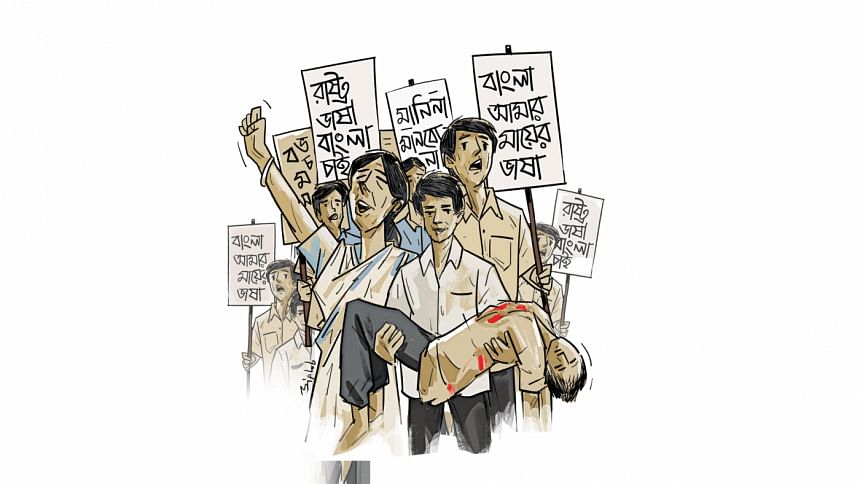Dinajpur stands up to tough resistance

This year marks the 73rd anniversary of the 1952 Language Movement. Drawing on research based on various published books, this 21-part series tells the story of the historic struggle for our mother tongue.
The arrival of approximately 50,000 Urdu-speaking Biharis in Dinajpur, Parbatipur and Syedpur after the 1947 Partition created a new social dynamic. When the student community in Dinajpur vehemently protested the Pakistan government's declaration that Urdu would be the state language, they faced opposition from the Bihari community and reactionary elements in the Muslim League.
The movement, however, gained momentum in Dinajpur as the students resisted the Biharis and Muslim League's opposition to Bangla as a state language. The protests resulted in an all-out strike on March 3, 1948. Students from various educational institutions actively participated in protests and demonstrations.
According to Mozammel Biswas's book Dinajpure Bhasha Andolan, the students of Surendranath College campaigned for another demonstration slated for March 11, as part of the programmes announced centrally from Dhaka. They distributed leaflets and made announcements by using loudhailers.
To suppress the movement, police arrested several student leaders, including Nurul Huda mirza, MR Akhter Mukul and Dabirul Islam. The authorities also imposed Section 144, limiting public gathering in the town.
On March 11, a general strike was observed. The students of Surendranath College, joined by the public, brought out a protest procession and marched on the main roads. A massive clash broke out when the police baton-charged the protesters and made more arrests.
In 1952, when the government declared Urdu as the state language of Pakistan on January 27, the streets of Dinajpur were filled with protesters.
According to Ahmed Rafiq's book Bhasha Andolan: Teknaf Theke Tetulia, a Sarbodoliyo Rashtrobhasha Sangram Parishad (All-Party State Language Movement Council) was formed in Dinajpur on February 4 under the leadership of Haji Mohammad Danesh, a peasant leader and politician. The other leaders of the council included Mohammad Ali, Amjad Hossain, Gurudas Talukder and Anil Roy.
As the protesters launched a campaign ahead of February 21, the main event of the movement, the local administration imposed Section 144 in the town on February 20.
Mozammel wrote in his Dinajpure Bhasha Andolan that students marched on the main streets of the town during the general strike throughout the day on February 21. They brought out another procession in the evening, followed by a rally at Dinajpur Zila School ground. A protest procession and a rally were also held in Dinajpur's Parbatipur.
The news of the killing of students in police firing in Dhaka reached Dinajpur on February 22. Immediately, students and people brought out processions from different parts of the town. The marchers chanted the slogan "Rashtrobhasha Bangla Chai". At the end of the processions, Haji Danesh and other political leaders delivered speeches at a rally in the town.
More processions were brought out on February 23, prompting the police to start arresting protest leaders. The movement, however, spread to the rural areas.

 For all latest news, follow The Daily Star's Google News channel.
For all latest news, follow The Daily Star's Google News channel. 


Comments